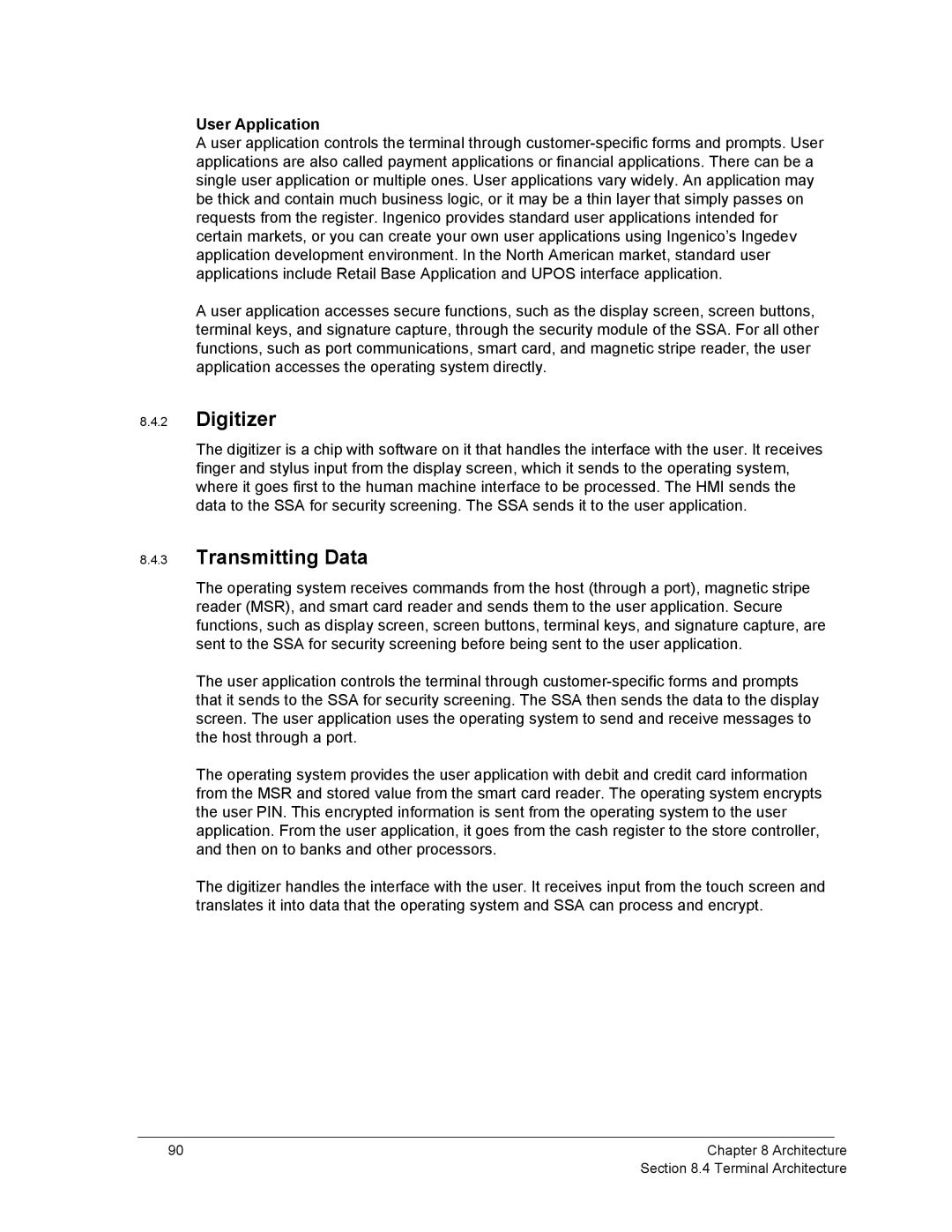User Application
A user application controls the terminal through
A user application accesses secure functions, such as the display screen, screen buttons, terminal keys, and signature capture, through the security module of the SSA. For all other functions, such as port communications, smart card, and magnetic stripe reader, the user application accesses the operating system directly.
8.4.2Digitizer
The digitizer is a chip with software on it that handles the interface with the user. It receives finger and stylus input from the display screen, which it sends to the operating system, where it goes first to the human machine interface to be processed. The HMI sends the data to the SSA for security screening. The SSA sends it to the user application.
8.4.3Transmitting Data
The operating system receives commands from the host (through a port), magnetic stripe reader (MSR), and smart card reader and sends them to the user application. Secure functions, such as display screen, screen buttons, terminal keys, and signature capture, are sent to the SSA for security screening before being sent to the user application.
The user application controls the terminal through
The operating system provides the user application with debit and credit card information from the MSR and stored value from the smart card reader. The operating system encrypts the user PIN. This encrypted information is sent from the operating system to the user application. From the user application, it goes from the cash register to the store controller, and then on to banks and other processors.
The digitizer handles the interface with the user. It receives input from the touch screen and translates it into data that the operating system and SSA can process and encrypt.
90 | Chapter 8 | Architecture |
| Section 8.4 Terminal | Architecture |
